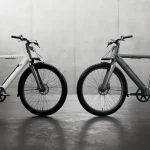Kurt Salmon Associates' economic analysis indicates retailers and suppliers will be unwrapping the merriest
holiday season since 1999, with Holiday shopping projected to increase 3.5% over last year.
Consumers with must-have gifts on their lists may want to shop early,
however. KSA says retailers have been very careful with inventory planning,
and out-of-stocks may be seen in some product categories. “Two factors
contribute to lower inventories this season,” explains KSA merchandising
specialist Steve Nevill. “First, retailers have planned their inventories
carefully and are managing them much better. Second, because of past soft
Holiday seasons, retailers have been snake-bit. They are scared to make big
commitments.”
Consumers' biggest holiday shopping headache this year is figuring out
what to buy for their families and friends. “Consumers today need to be
inspired. We live in a society in which many of us have what we need. The
challenge for retailers is to invoke an “I want that” response from target
consumers – through innovative product offerings,” says KSA Principal Madison
Riley. “This means employing merchants with a creative eye for product and
working with suppliers that take R&D/innovation very seriously.”
Consumers' 5 Biggest Holiday Shopping Headaches
(Base: Total respondents who plan to holiday shop this season)
1) 74% - figuring out what to buy for people
2) 73% - long check-out lines and crowds in the stores
3) 43% - the time it will take to do all their shopping
4) 33% - trying to find parking
5) 30% - availability of the merchandise they want (in-stock)
Source: Kurt Salmon Associates Holiday Shopping Survey
A few interesting points to note by gender:
-- More women stress over what to buy as gifts - 75%
-- More men stress about the long lines and crowds in stores and the time
it will take to complete their shopping - 76%
-- More women worry that the merchandise they want will be
out-of-stock - 31%
-- More women are annoyed with the lack of innovative merchandise from
which to choose - 21%
“The most exciting and best performing retailers are finding interesting
ways to visually present product,” says Nevill. “L.L. Bean's recent holiday
catalog, for example, had an actual swatch of its famous chamois shirt
material attached to the cover. Showing how a product can be used, alone or
with other products, helps customers visualize their own experience. It also
improves retailers' add-on sales and conversion rates,” says Nevill.
Almost one-quarter looks to non-store formats
“A fundamental shift has occurred in today's consumers' shopping behavior.
Where they shop and where they purchase are not necessarily the same place any
longer. They may begin the shopping process online or with a catalog well
before setting foot in a store,” says Phil Kowalczyk, KSA Managing Director,
North America.
-- 33% plan to do 20% or less of their shopping via non-store venues this
year
-- 28% plan to do between 21% and 30% of their shopping this way, and
-- 12% plan to do more than half of their holiday shopping via non-store
formats.
“Consumers expect and even demand multi-channel brands today. The old
adage that the key to success in retailing is 'location, location, location'
has come to mean that successful retailers are able to connect with their
target consumers in all shopping venues. With an abundance of choices and
limited time, today's consumers are not going to go looking for you,” says
Kowalczyk.
Where are Consumers Planning to Shop?
-- Discounters - 84%
-- National Chains - 56%
-- Warehouse Clubs - 29%
-- Department Stores - 28%
-- Specialty Stores - 26%
-- Off-Price Stores - 21%
Specialty Stores (36%) and Off-Price Stores (25%) are frequented most by
those aged 34 and under, and 33% of surveyed consumers aged 45 to 54 plan to
shop at Department Stores.
What's on Consumers' Shopping Lists
Consumers are planning to spend this holiday season, but they want the
best value for their money. They are buying:
-- Apparel - 66%
-- Toys - 53%
-- Books & music - 51%
-- Store gift certificates - 45%
-- Home furnishings - 41%
-- Body care products - 38%
-- Home electronics - 36%
-- Perfume/cologne - 28%
-- Video games & equipment - 28%
-- Footwear - 18%
-- Sporting goods - 16%
-- Vacations & entertainment - 11%
“Consumers are demanding that retailers and suppliers offer innovative
solutions to their needs. Innovation is essential to improving the dismal 2%
comp-store performance we have seen in recent months,” says Nevill. “Retailers
and manufacturers must work together as an integrated supply system to focus
on what drives consumer wants and needs,” he says. “Innovation must satisfy
three criterion to make a difference to consumers: 1) it must be dramatic, 2)
it must occur at the product level through a clear point of view, and 3) it
must provide inspiration and solutions for the consumer.”
What do Consumers Want for Themselves?
Top mentions in order by gender are as follows:
Men
Various electronics
Clothes
Sporting goods
Tools
Cash
DVD player
Digital camera
Big-screen TV
Women
Clothes
Jewelry
Cash
Various electronics
Things for home
Gift certificates
DVD player
Digital camera
“Consumers want ideas, choice, and convenience,” says Nevill. “Price is
not always the primary value driver. Retailers who connect with those customer
needs this holiday season will be remembered and rewarded in 2004.”
“The Limited Stores' Express concept offers one example of the type of
choice consumers are seeking,” says Riley. “The store features a 'jean wall,'
displaying different styles for different sizing needs.”















